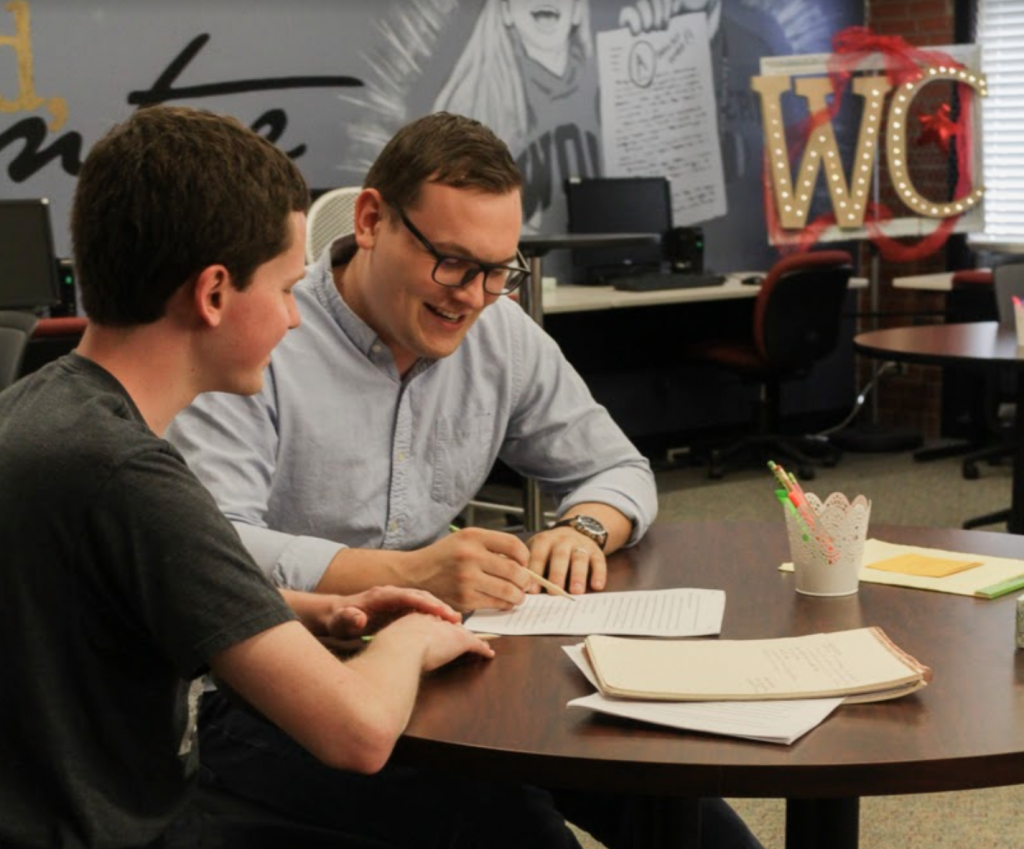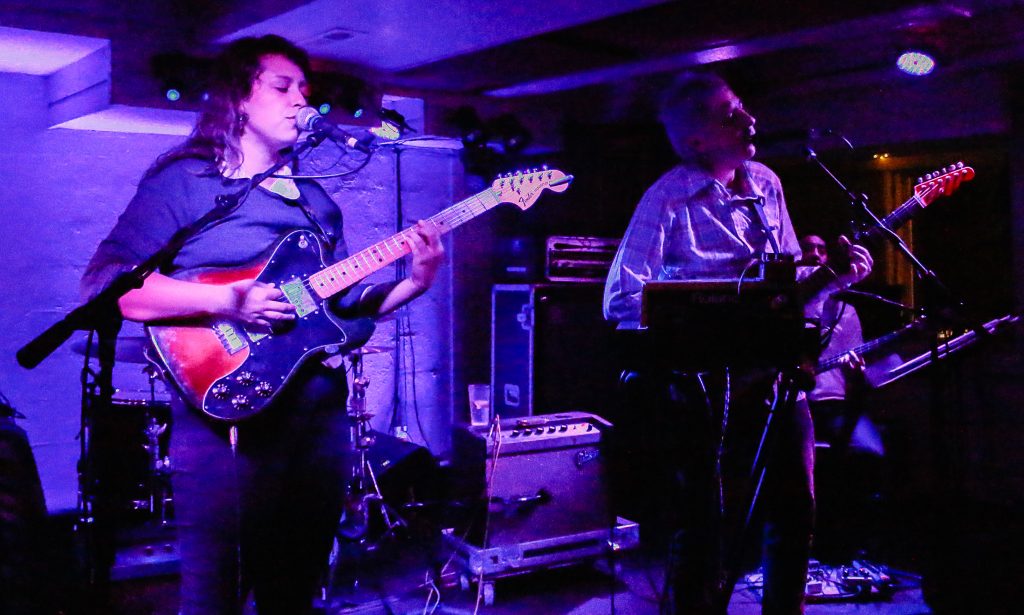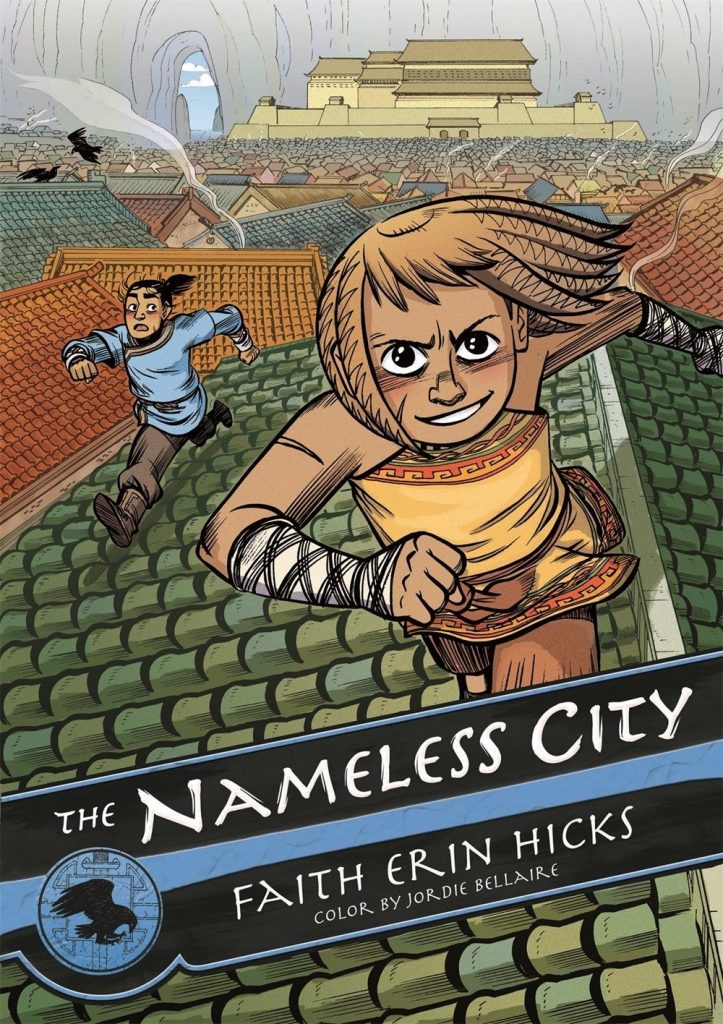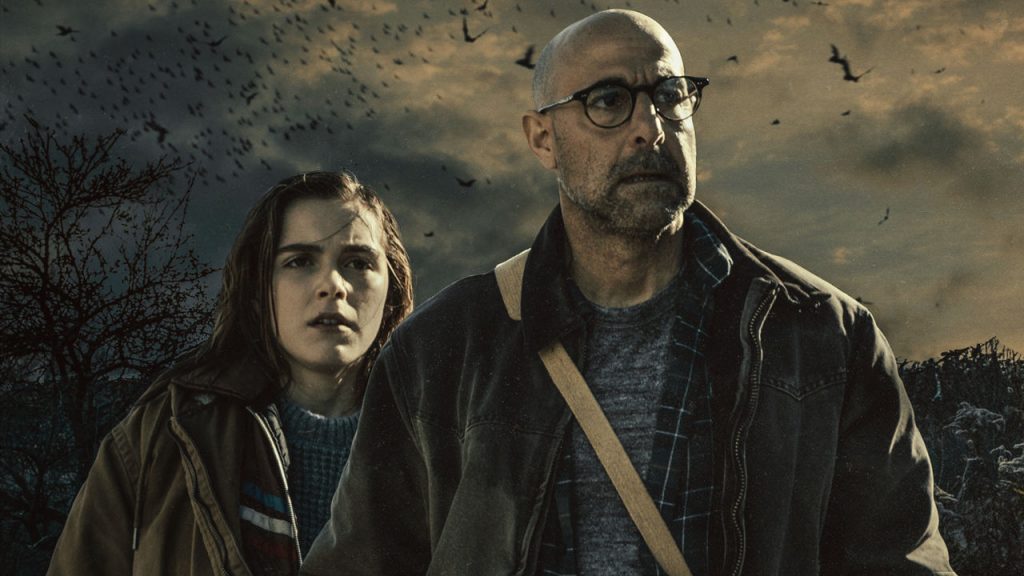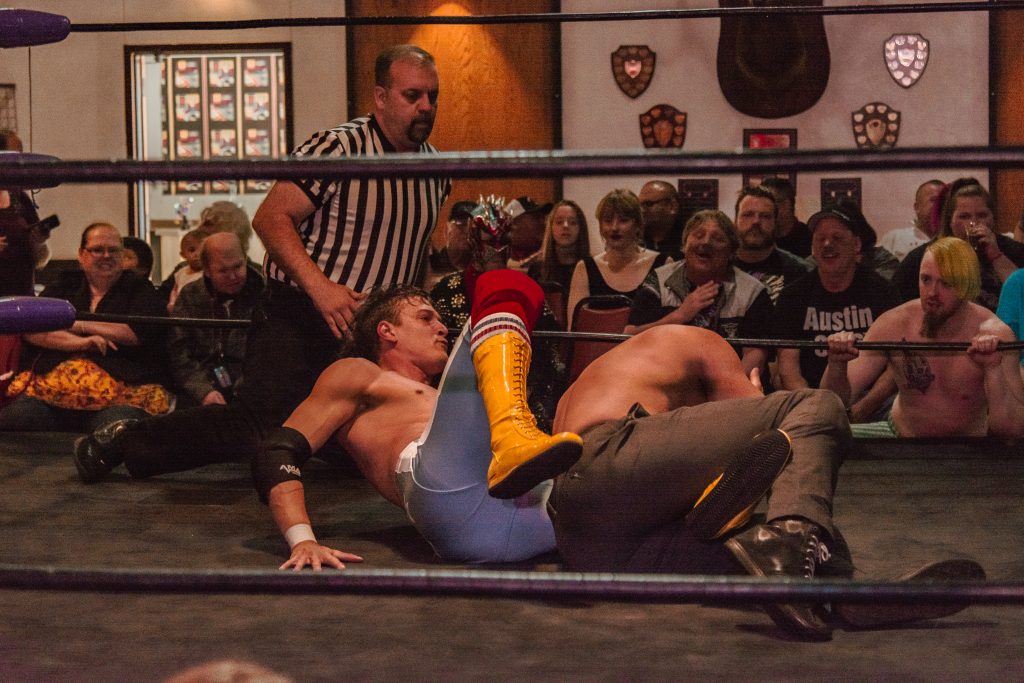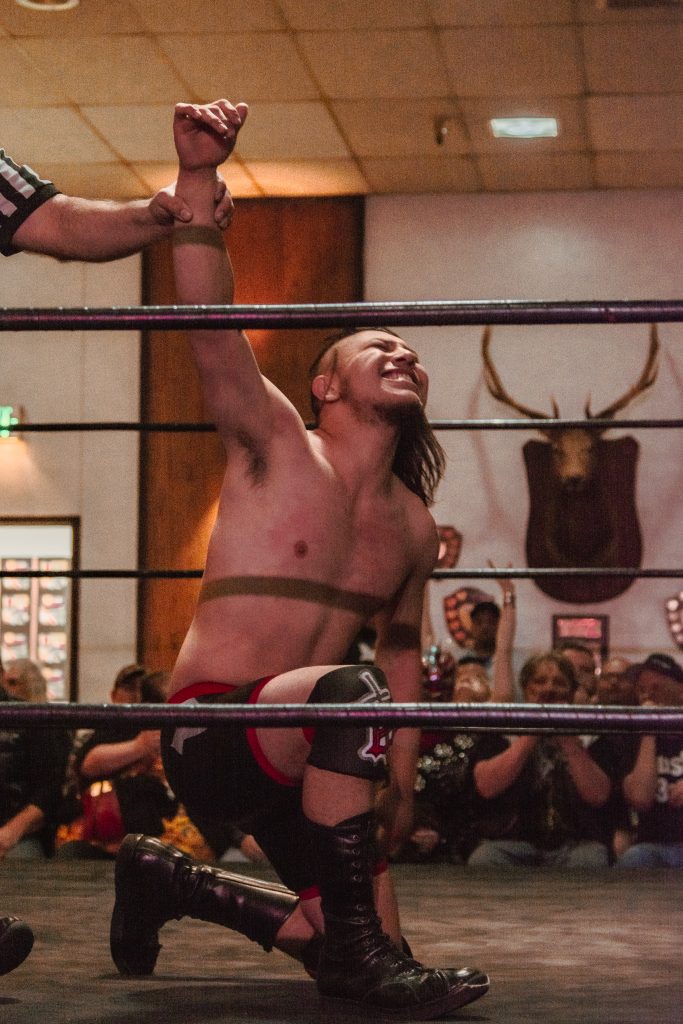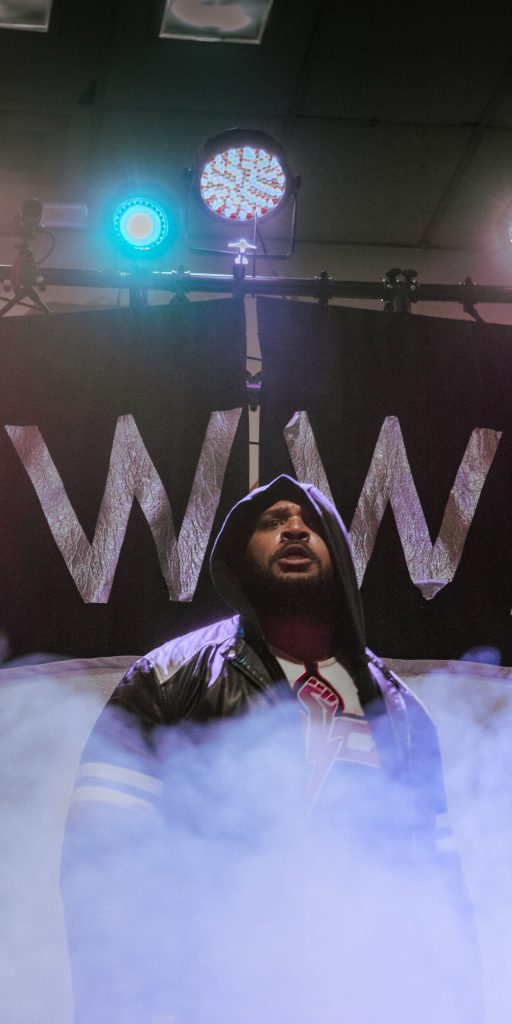
Caity Healy | Editor-in-Chief
It was a battle like Independence had never seen before. In the middle of the Elk’s Lodge, a wrestling ring had been staged — the eventual setting for six unforgettable Northwest Wrestling Alliance Professional Wrestling matches. On April 27, a crowd of all ages filled the seats and waited in anticipation of what was to come with the “War of Independence.”
As the fast-paced rock music grew louder, so did the eagerness. Finally, the curtains swung open and rushing to the ring was the NWAA’s new ring announcer, Richie Stratton. The crowd welcomed Stratton with cheers and applause, as he prepared the viewers for the fight they were about to see: Eddie Pearl versus Eric Right.

Smoke seeping from the cracks of the curtain, Eddie came rushing out in glory, rock music playing to complement the mullet he was donning. Engaging with the crowd, he made his way to the ring and awaited his opponent. Right behind him, Eric Right made his appearance known. Despite the boos of the crowd, he was ready for a fight. After an extravagant show of elbows, pins and punches, Eddie took the title.
In Eddie’s next battle against Johnny Paradise, Eddie sustained injuries early on that forced the match to utilize the “Freebird Rule.” By using this, Eddie’s backup Billy stepped in as substitute. This, however, turned out to be a squash, as Johnny Paradise took Billy down in two seconds.
Up next was Joseph Bennett versus Troy Dagger. A mix of cheers and boos for each opponent could be heard from the crowd, as nobody was sure who’d come out on top. But after a huge suplex in the hands of Dagger, Bennett went down hard; Troy Dagger took the win.
The crowd was anxious for a real fight, and that’s exactly what they were given as Doctor Clever and Caden Cassidy took to the ring. Playing heavy metal and sporting a large mohawk, Doctor Clever was a model example of what the audience hated. However, two people in the audience had to disagree with the rest.
“Doctor Clever was definitely my favorite wrestler,” said audience member Alexa Boucher. Sitting next to her was audience member Mason Hinton, who chimed in as well.
“It was his mohawk that really set him apart from everyone else,” said Hinton.
The two outlier fans ended up getting the outcome they wanted, as Doctor Clever was able to take down the famous Caden Cassidy.
It was time to change it up a bit. Two teams took the ring: Konami Code, which was made up of wrestlers Julian Whyt and C.J. Edwards, versus High 5, which was made up of Patrick Large and Draven Vargas. The teams weren’t willing to go down easy, taking turns to take their opponents down — but only one could come out on top. After an outrageous show, Konami Code was deemed victorious.

Following a long intermission, the crowd was ready to see something new. That’s exactly what Stratton was ready to give them as he introduced the “power of femininity,” as he called it, by bringing Fire Rose and Mary Jane Pain to the ring. The two didn’t hold back — punches were thrown and a fight ensued until it was interrupted by the curtains being ripped open: Eddie van Glam was here, and he wanted it to be known. Wearing pants that were one-leg-spandex, one-leg-fishnets, and donning a shirt that simply said “Butt Stuff,” the audience knew he meant business. The fight quickly turned into two against one, as Rose and MJ took on Eddie; the women took the title.
At last, it was time for the Championship Match: the “Black Sheep” Dave Turner versus Johnny Paradise. Turner was hated by the crowd, but unlike the other antagonists, he wouldn’t easily accept the boos. Clearly unable to withhold his anger, he even went up to a crowd member, cursed at him, flipped him off, then threw his hat off of his head. Paradise, on the other hand, was loved. He fed off of the crowd’s energy until finally, he stole the title from Turner and became the champion.
Speaking once again with Boucher and Hinton, they had more to add about this match.
“We’re here because we’re wrestling fans … it was a great show. It was very energetic and there was a really good crowd,” said Boucher.
“More people need to go to wrestling shows — people will be pleasantly surprised,” added Hinton.
Wrestler Caden Cassidy described the crowd in one word — electric.
“This is one of the best crowds I’ve ever had in this area,” said Cassidy. “Big turnout. And I think we actually gave them a good show.”
The NWWA is holding its next match at the Milwaukie Elks Lodge on May 11, and will be returning to the Independence Elks Lodge on June 22.
Contact the author at howleditor@wou.edu
Photos by Paul F. Davis





